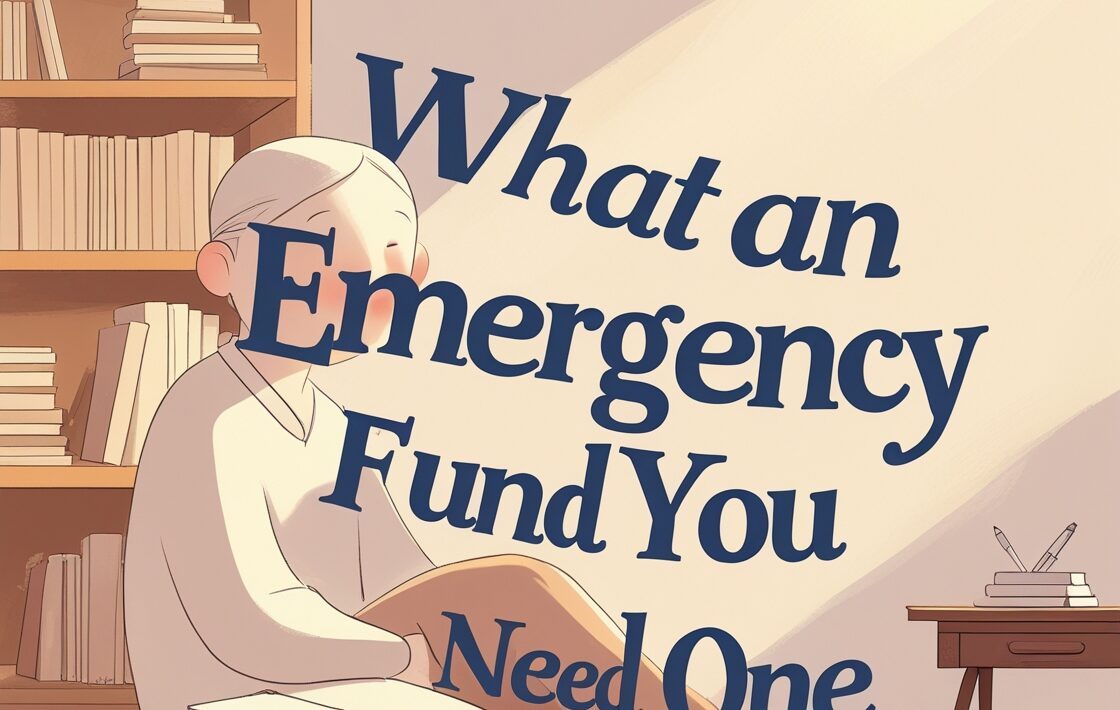Life is unpredictable. No matter how well you plan, unexpected expenses will come your way—whether it’s a medical bill, car repair, job loss, or home emergency. That’s where an emergency fund becomes one of the most essential tools in your financial plan.
It’s not just a safety net; it’s peace of mind. When you have money set aside specifically for emergencies, you don’t have to rely on credit cards, loans, or borrowing from friends and family to stay afloat.
What Exactly Is an Emergency Fund?
An emergency fund is a stash of money set aside specifically for unexpected expenses. It’s not the same as your savings for a vacation, a new car, or a house. This money is only for true financial emergencies.
The goal is to have quick access to cash when something urgent happens, without disrupting your budget or going into debt.
Why an Emergency Fund Is So Important
Imagine your car breaks down and the repair bill is $1,200. If you don’t have the money saved, you might:
- Put it on a credit card with 20%+ interest
- Borrow from your retirement fund, losing future growth
- Delay the repair, making it worse
- Take out a personal loan with high fees
Having an emergency fund allows you to solve the problem immediately, without financial stress or long-term consequences.
What Counts as an Emergency?
It’s important to define what a true emergency is so you don’t dip into your fund for non-essentials. Emergencies typically include:
- Medical emergencies or dental costs
- Unexpected car or home repairs
- Job loss or significant reduction in income
- Emergency travel for a family crisis
- Unforeseen legal expenses
What doesn’t count?
- Holiday gifts
- Vacation expenses
- Shopping sales
- Dining out
Use your emergency fund only for needs that are urgent, unexpected, and necessary.
How Much Should You Save?
The ideal size of your emergency fund depends on your lifestyle, income, and responsibilities. Here’s a general guide:
- Beginner Goal: Start with $500 to $1,000 as a mini emergency fund
- Full Emergency Fund: Aim for 3 to 6 months of living expenses
If your monthly expenses are $2,500, your goal should be between $7,500 and $15,000.
Single-income households, freelancers, or those with irregular income might aim for closer to 6–9 months for extra security.
Where Should You Keep Your Emergency Fund?
The best place for your emergency fund is somewhere safe, liquid, and easily accessible, such as:
- High-yield savings account: Offers interest while keeping money accessible
- Money market account: Similar to a savings account but may have limited transactions
- Separate checking account: Easy access but low or no interest
Avoid keeping it in your regular spending account—separating it reduces the temptation to use it for non-emergencies.
Never invest your emergency fund in stocks or risky assets. The value can drop just when you need the money most.
How to Build an Emergency Fund from Scratch
It’s okay to start small. The key is consistency.
- Set a savings goal
Decide your ideal amount and break it down into smaller monthly goals. - Automate your savings
Set up automatic transfers from your checking account to your emergency fund. - Cut back temporarily
Reduce discretionary spending (eating out, subscriptions) and redirect that money. - Use windfalls wisely
Put tax refunds, bonuses, or gift money into your emergency fund. - Track your progress
Seeing your balance grow can be incredibly motivating.
Mistakes to Avoid
- Keeping it in cash at home: This is risky and doesn’t earn interest.
- Investing it in the stock market: Your emergency fund is for security, not returns.
- Using it for non-emergencies: Be strict about what counts.
- Waiting too long to start: Start with what you can today—even $10 matters.
When to Use It—and When Not To
You should use your emergency fund when:
- You’ve lost your job or income
- You have unexpected medical bills
- Your car or home needs urgent repair
- You face sudden legal expenses
You should not use it for:
- Upgrading your phone
- Impulse shopping
- Taking a trip
- Paying down low-interest debt (unless you have a separate fund)
When you do use it, replenish it as soon as possible. That way you’re ready for the next emergency.
